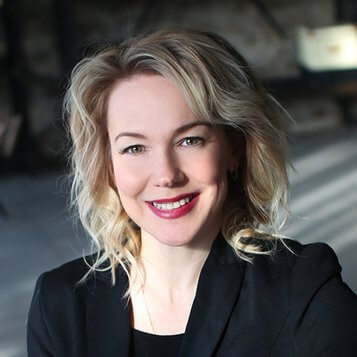Современное сватовство превратилось в сложную индустрию, сочетающую консультирование по личным отношениям с деловой хваткой. В эпоху доминирования приложений для знакомств профессиональные свахи предлагают альтернативу, ориентированную на индивидуальный подход и знакомство. Мировой рынок услуг по подбору и организации свиданий очень велик - в 2023 году он оценивался примерно в $8,5 миллиарда, а к 2032 году прогнозируется рост почти до $13 миллиардов. В настоящее время наибольшая доля этого рынка приходится на Европу, в то время как Азиатско-Тихоокеанский регион является самым быстрорастущим. Этот рост отражает растущий спрос на индивидуальные решения для свиданий на уровне консьержа, особенно среди занятых профессионалов и состоятельных людей.
В данной статье представлен академический обзор современного бизнеса по организации сватовства: определено, что значит быть профессиональной свахой сегодня, рассмотрен спектр предлагаемых услуг, описаны распространенные бизнес-модели и проанализированы структуры ценообразования в разных регионах. Опираясь на отраслевые отчеты, рыночные данные и тематические исследования, мы подчеркиваем, что услуги сватовства работают как посредники в личных отношениях и как коммерческие предприятия.
Определение профессиональной свахи в современном мире
Профессиональная сваха - это специалист, который помогает клиентам найти совместимых партнеров с помощью индивидуального и проактивного процесса. В отличие от алгоритмизированных приложений для знакомств, где пользователи самостоятельно просматривают бесчисленные анкеты, современные свахи сочетают человеческую интуицию с данными для подбора партнеров. Матчмейкинг в данном контексте означает индивидуальный поиск потенциального партнера, осуществляемый специалистом, который делает акцент на качестве, а не на количестве знакомств. Обычно сваха уделяет время глубокому изучению личности, ценностей и целей отношений каждого клиента, а затем использует свой опыт и связи для поиска наиболее подходящих кандидатов. Такой практический подход контрастирует с безличным характером переходов по ссылкам в приложениях. Как говорится в описании агентства знакомств SoulMatcher, профессиональное сватовство сосредоточено на "сотрудничестве с сервисом, который делает ставку на качество, а не на количество", предлагая руководство на сложном пути поиска долгосрочного партнера.
Профессиональные свахи сегодня часто имеют разный опыт работы: кто-то является тренером по отношениям или бывшим рекрутером, кто-то - психологом или опытным предпринимателем. Их объединяет роль, сходная с ролью консультанта в любви: они проводят подробные интервью с клиентами, проверяют потенциальных партнеров и даже обучают клиентов тому, как улучшить их подход к свиданиям. Учитывая клиентуру (часто это успешные, занятые люди), осторожность и конфиденциальность имеют первостепенное значение. Многие свахи ведут эксклюзивные базы данных предварительно отобранных людей и работают в соответствии со строгими соглашениями о конфиденциальности, чтобы защитить личность клиента. Эта услуга особенно ценится публичными личностями или профессионалами высокого уровня. В общем, современная профессиональная сваха - это одновременно и эксперт по отношениям, и поставщик услуг, предлагающий индивидуальное решение для тех, кто серьезно настроен найти подходящего партнера.
Услуги, предлагаемые современными брачными фирмами
Современные брачные агентства предоставляют целый спектр услуг, выходящих за рамки базового знакомства, часто сгруппированных по уровням членства. Эти услуги могут включать в себя:
- Персональное знакомство: Основное предложение любой свахи - ручной подбор потенциальных партнеров для клиента. Каждое знакомство, как правило, является результатом тщательного отбора и оценки совместимости, а не случайного подбора. Свахи могут проводить углубленные консультации и использовать психологическое профилирование, чтобы убедиться в том, что каждая пара соответствует критериям клиента. Например, многие фирмы начинают с первичного интервью или личностного опроса, чтобы понять биографию и предпочтения клиента, а затем ищут подходящих кандидатов в своей сети или базе данных. Затем сваха содействует встрече, часто организуя первое свидание и занимаясь логистикой, чтобы клиент мог сосредоточиться исключительно на межличностном контакте.
- Коучинг и дата отзыва: Профессиональные свахи часто выступают в роли тренеров по знакомствам. Они предоставляют экспертные рекомендации по улучшению навыков знакомства, например, советы по общению, стилю и образу мышления. Многие услуги включают в себя коучинг перед свиданием или консультации по готовности к свиданию, чтобы помочь клиентам показать себя с лучшей стороны. После каждого знакомства сваха получает отзывы от обеих сторон и делится с клиентом своими соображениями, чтобы уточнить дальнейшие поиски. Такой итеративный цикл обратной связи является дополнительным преимуществом, которого лишены обычные приложения для знакомств, - он помогает клиентам учиться и корректировать свой подход с помощью профессионала. На более высоких уровнях сервиса коучинг может быть весьма активным: некоторые элитные пакеты услуг по подбору партнера включают в себя консультации по имиджу, персональный стайлинг или даже сеансы с психологами для выявления моделей отношений. Цель - не только найти пару, но и улучшить общую стратегию знакомств и самопрезентацию клиента.
- Уровни членства (от стандартного до элитного): Компании, предоставляющие услуги по поиску и подбору партнеров, часто предлагают многоуровневые планы членства или "элитные членства", различающиеся по уровню обслуживания и цене. Базовый уровень может включать в себя ограниченное количество совпадений в местном регионе в течение короткого времени, в то время как премиальный или "VIP-консьерж" уровень может предлагать неограниченный поиск по всей стране (или за рубежом) и множество дополнительных услуг. Например, клуб знакомств SoulMatcher на базе приложения имеет базовый, премиальный и консьерж-уровни, каждый из которых открывает все более широкие возможности (например, более глубокий анализ совместимости, практическая помощь и даже виртуальные мероприятия для налаживания контактов). Членство высшего уровня обычно предполагает более персонализированное внимание: от имени клиента может работать старшая сваха или даже основатель компании, а при необходимости фирма может "искать" потенциальных партнеров за пределами своей базы данных. Элитные пакеты часто включают в себя такие привилегии, как приглашения на эксклюзивные мероприятия, приоритетное сватовство и расширенный коучинг. По сути, чем больше клиент готов вложить, тем больше ресурсов и времени сваха выделит на поиск.
- Управление и отбор анкет для знакомств: Некоторые современные службы подбора сочетают цифровые инструменты с традиционными методами. Например, гибридные службы помогут клиенту создать или улучшить профиль на сайте знакомств и даже проведут первичную работу с приложениями для знакомств от его имени. Такая услуга понравится занятым профессионалам, которые хотят охватить все базы - команда свахи может как организовать личные знакомства, так и улучшить присутствие клиента в сети. Кроме того, свахи проводят тщательную проверку кандидатов. Это может включать в себя проверку биографии, проверку образования или карьерных заслуг, а также проведение интервью с потенциальными партнерами, прежде чем представить их клиенту. Например, одно премиум-агентство по подбору пары в Таиланде подчеркивает, что проверяет трудоустройство, финансовое положение, образование и даже лично удостоверяет личность всех участников. Такая проверка гарантирует безопасность и совместимость, а также уверенность в том, что люди, с которыми встречаются клиенты, являются теми, за кого себя выдают.
- Конфиденциальные базы данных и бесплатное членство: Примечательным аспектом бизнеса по подбору пары является ведение большой базы данных потенциальных партнеров, не все из которых являются платными клиентами. Многие агентства позволяют людям (часто женщинам в традиционных моделях) присоединиться к их реестру или базе данных за низкую или бесплатную плату, при условии, что они пройдут проверку. Эти неплатящие члены служат потенциальными партнерами для платящих клиентов агентства. Это объясняется тем, что расширяется круг кандидатов и повышаются шансы найти пару для клиента с очень специфическими критериями. Однако тем, кто находится в бесплатной базе данных, не гарантируется, что их когда-нибудь сведут на свидании. Такая модель особенно распространена в элитных фирмах, ориентированных на состоятельных клиентов-мужчин: женщины могут быть приглашены бесплатно после проверки, а мужчины финансируют поиск. В более гендерно сбалансированных фирмах платят и мужчины, и женщины, но даже в этом случае фирма может позволить некоторым людям (возможно, исключительно подходящим кандидатам) присоединиться к базе данных бесплатно, чтобы увеличить отбор для платящих членов.
- Дополнительные услуги и мероприятия: Помимо собственно сватовства, агентства предлагают различные дополнительные услуги. Некоторые проводят мероприятия только для членов клуба, такие как миксеры, туристические экскурсии или семинары, чтобы создать дополнительные возможности для встреч клиентов в непринужденной обстановке. Другие сотрудничают с сервисами, имеющими отношение к свиданиям: например, предоставляют профессиональные фотографии для анкет, имиджмейкерские услуги или даже организуют транспорт и бронирование мест для свиданий в качестве консьерж-сервиса. Высококлассные свахи могут включать такие услуги, как оценка личности (например, Майерс-Бриггс или собственные психологические тесты) и отчеты о совместимости для каждой пары. Например, SoulMatcher в рамках своего консьерж-подхода включает подробные психологические исследования и даже координирует логистику первого свидания (например, бронирование столиков в ресторане). Эти дополнительные услуги улучшают впечатления клиентов и оправдывают премиум-плату, делая процесс знакомства максимально гладким и продуманным.
В общем, современные агентства по поиску и подбору партнеров работают как кураторы отношений с полным спектром услуг. Клиенты обычно получают пакет услуг, который может включать в себя определенное количество знакомств, индивидуальный коучинг, обратную связь после каждого свидания и различные другие механизмы поддержки. Конкретный набор услуг зависит от уровня сервиса, но общее обещание - сэкономить время и силы клиента, передав поиск партнера профессионалам. Именно такой высокий уровень сервиса отличает профессиональное сватовство от случайных приложений для знакомств или онлайн-знакомств "сделай сам" - это консьерж-сервис для поиска любви, часто с акцентом на серьезные, долгосрочные отношения.
Бизнес-модели в индустрии сватовства
Для монетизации своих услуг компании, предоставляющие услуги по подбору пары, разработали целый ряд бизнес-моделей, зачастую отражающих различные целевые рынки и культурные нормы. Общей чертой является то, что эти услуги, как правило, являются премиальными предложениями, но способы взимания платы с клиентов (и кто платит) могут быть разными. Ниже представлены основные бизнес-модели в современной индустрии сватовства:
- Модель членства с гендерным перекосом
Исторически сложилось так, что многие высококлассные фирмы по подбору партнеров работают по модели, при которой мужчины платят высокие гонорары, а женщины присоединяются к ним бесплатно. В этой модели мужчины являются платными клиентами, которые получают гарантированные совпадения, в то время как женщины могут быть включены в базу данных бесплатно, но без гарантии совпадения. Логика, часто не озвучиваемая, коренится в традиционной гендерной динамике: считается, что мужчины (особенно состоятельные) готовы вкладывать деньги в поиск партнера, а привлечение большого числа подходящих женщин повышает шансы сервиса на удачное совпадение с этими мужчинами. Например, некоторые элитные агентства берут с клиентов-мужчин от $25 000 до $500 000 за годовое членство, в то время как анкеты женщин хранятся в бесплатной базе данных, чтобы быть рассмотренными для этих платящих клиентов. Однако женщина из бесплатной базы данных может никогда не получить свидания, если только она идеально не соответствует тому, что ищет клиент-мужчина. Эту модель критикуют за то, что она может привлекать женщин, заинтересованных в знакомстве с состоятельными мужчинами (так называемых "золотоискателей"), и некоторые современные фирмы отказались от нее, чтобы казаться более справедливыми. Тем не менее она по-прежнему используется в некоторых ультрароскошных свахах, особенно в тех, где преобладают мужчины-руководители.
- Гендерно-нейтральная модель членства
В более современном подходе платящими клиентами являются как мужчины, так и женщины, причем каждый из них вкладывает в услуги практически на равных условиях. В этой модели все обычно платят членский или предварительный взнос за сватовство, а представителям обоих полов (или всем клиентам, независимо от пола) обещают определенный уровень обслуживания (например, установленное количество знакомств). Стоимость услуг в этой парадигме может варьироваться в широких пределах в зависимости от позиционирования фирмы - годовое членство может начинаться от нескольких сотен или нескольких тысяч долларов и достигать шестизначной суммы за комплексные пакеты. Согласно отраслевым исследованиям, "годовое членство может начинаться от $500 и доходить до $500,000" в рамках этой модели. Многие клиенты предпочитают эту модель за ощущение справедливости и взаимных обязательств: она рассматривает сватовство как инвестицию в личную жизнь как мужчины, так и женщины, и часто гарантирует каждому платящему клиенту определенное количество встреч или минимальный срок обслуживания. Такой подход также способствует привлечению клиентов, которые одинаково серьезно (и финансово) настроены на поиск отношений, независимо от пола.
- Вознаграждение за вознаграждение в сравнении со структурой вознаграждения за успех
Обычно свахи берут предоплату за свою работу (подобно предоплате за профессиональные услуги), а не просто "платят за результат". Большинство контрактов на сватовство подразумевают предварительную оплату аванса или членского взноса, покрывающего время и ресурсы свахи в течение определенного периода (например, шести месяцев или одного года работы). Некоторые элитные фирмы строят свою работу как поиск руководителя: например, Selective Search (известная американская фирма по подбору персонала) описывает свой процесс как "поиск с привлечением специалистов", средняя стоимость которого составляет от $50 000 до $250 000 за год работы. Клиенты платят эту сумму независимо от результата, как при найме хедхантера. Однако в некоторых случаях (как правило, в самых крупных) в дополнение к гонорару может быть выплачен гонорар за успех. В частности, при поиске VIP-персон на заказ в контракте может быть оговорена премия, если клиент обручится или женится на человеке, представленном службой. Хотя конкретные цифры часто не разглашаются, по некоторым данным, гонорары за успех могут быть значительными - от десятков тысяч до $1 миллиона в некоторых случаях, когда речь идет о сверхбогатых людях. Такие гонорары за успех, по сути, являются "вознаграждением" для свахи, если она достигает конечного результата (брака), и приводят стимулы услуги в соответствие с целью клиента в отношениях. Тем не менее, плата за успех не является универсальной - многие свахи берут высокую фиксированную плату и не связывают вознаграждение с браком, отчасти потому, что химические отношения и долгосрочный успех не полностью зависят от них. Таким образом, клиенты обычно платят за доступ и усилия, а не за гарантированного супруга.
- Уровни пакетов и сроки
Большинство служб подбора предлагают многоуровневые пакеты, отличающиеся продолжительностью и интенсивностью поиска. Обычные пакеты могут быть следующими: 3-месячный, 6-месячный или 12-месячный, иногда с возможностью приостановки или продления. Более длительные контракты могут быть более выгодными с точки зрения стоимости в месяц, но требуют больших предварительных обязательств. Например, одна из американских компаний среднего уровня, занимающаяся сватовством, Three Day Rule, предлагает пакеты услуг на 3 месяца (около $6 000) или 6 месяцев (около $9 000) с гарантией как минимум одной встречи в месяц в течение этого времени. В отличие от этого, многие фирмы высокого класса заключают контракты на 12 или 24 месяца, поскольку берут меньше клиентов и проводят более масштабные поиски; такие длительные контракты признают, что поиск нужного человека может занять время. В одном из отраслевых обзоров отмечается, что "большинство элитных услуг [в США] начинаются от $25 000-$50 000" и часто требуют годичных обязательств, в то время как один сервис (VIDA Select) отличается тем, что предлагает планы "месяц в месяц" без длительных обязательств. Это свидетельствует о том, что гибкость может быть разной - некоторые современные агентства стремятся быть более доступными, используя более короткие или платные модели, в то время как традиционные элитные свахи предпочитают заключать долгосрочные договоры.
- Комиссионные за матч и гибридные модели
Менее распространенная, но существующая модель - взимание платы за успешный матч или свидание вместо (или в дополнение) к базовой плате. Некоторые бутиковые агентства или франшизы могут иметь более низкую начальную стоимость, но затем взимать плату каждый раз, когда вы идете на свидание, которое они организуют. Например, агентство по подбору пары в Мельбурне, Австралия, упоминает о взимании платы за знакомство (~$65 за свидание на человека) вместо большого паушального взноса. Такой подход снижает барьер для входа (клиенты платят небольшие суммы по мере возникновения знакомств), но может стимулировать количество, а не качество. Существует и гибридное ценообразование: например, агентство может взимать умеренную плату за регистрацию, а затем меньшую плату за каждую встречу или за каждый месяц продолжения услуги. Подбор партнера по подписке - одна из развивающихся моделей: В качестве примера можно привести компанию SoulMatcher, которая взимает фиксированную плату в размере $150 в месяц за свои услуги консьерж-знакомств (после первоначального бесплатного знакомства), действуя подобно клубу по подписке. Согласно этой модели подписки, если клиент не нашел пару в данном месяце, следующий месяц предоставляется бесплатно - фактически гарантия определенного уровня активности. Это инновационный подход, сочетающий в себе подписку на приложения для знакомств и индивидуальный подход в сватовстве, и контрастирующий с большими единовременными взносами традиционных свах. Это показывает, как индустрия экспериментирует с более гибкими с точки зрения бюджета или результатов методами тарификации, возможно, чтобы привлечь более молодых клиентов.
- Долевое участие и гарантии "нет совпадений - нет оплаты"
Несмотря на то, что это не так часто встречается в крупных компаниях, некоторые услуги предусматривают гарантии или возврат денег. Некоторые свахи продлевают контракт бесплатно, если в течение оговоренного срока не найдены подходящие пары (по сути, они работают до тех пор, пока не произойдет минимальное количество знакомств). Приведенный выше пример SoulMatcher - одна из таких гарантий: за месяцы без знакомств плата не взимается. Как правило, полностью условные соглашения или соглашения "нет совпадения - нет гонорара" встречаются редко, поскольку свахи вкладывают значительные предварительные усилия. Однако в этой сфере конкуренция (особенно со стороны бесплатных приложений для знакомств) вынуждает свах демонстрировать уверенность в своих услугах. В результате некоторые агентства среднего сегмента рекламируют гарантии удовлетворенности или продолжают работать с клиентом до тех пор, пока он не встретит кого-то особенного (в пределах разумного). Клиентам следует внимательно читать договоры: многие агентства премиум-класса прямо указывают, что не гарантируют брак или конкретный результат, а только предоставление знакомств и сопутствующих услуг.
В общем, бизнес сватовства, как правило, основан на высокодоходных продажах с небольшим объемом продаж - гонорары высоки, что отражает трудоемкость и персонализированный характер услуг, и каждая сваха или фирма может одновременно обслуживать лишь ограниченное количество клиентов. Клиенты финансируют индивидуальный поиск будущего партнера, будь то крупные авансовые платежи или постоянные подписки. Модели разработаны таким образом, чтобы покрыть значительное время, затрачиваемое на интервьюирование клиентов, поиск потенциальных партнеров и инструктаж клиентов в процессе поиска. По мере развития индустрии мы видим, как традиционные модели (с гендерным перекосом, долгосрочные контракты) сосуществуют с более новыми моделями (гибкие подписки, гибриды), каждая из которых привлекает различные сегменты рынка. Неизменным остается то, что сватовство - это бизнес премиум-услуг, позиционирующий себя как противоядие от обезличенных и отнимающих время аспектов массовых платформ знакомств.
Ценообразование на услуги сватовства: Глобальный обзор
Цены в индустрии сватовства сильно различаются в зависимости от уровня сервиса, региона и целевой аудитории. В отличие от стандартных (часто низких) расценок в приложениях для знакомств, сервисы сватовства работают по индивидуальной модели ценообразования, часто схожей с профессиональным консалтингом или услугами класса люкс. Здесь мы сравним типичные диапазоны цен и то, что получают клиенты на разных уровнях, а также заметные различия между регионами, такими как Северная Америка, Европа, Азия, Ближний Восток, Африка, Латинская Америка и Австралия.
Уровни цен и то, что получают клиенты
Анализ отрасли и раскрытие информации о компаниях, предоставляющих услуги по подбору персонала, свидетельствуют о расслоении услуг по цене:
- Низкоклассные сваты ($500-$5,000). На самом низком ценовом уровне (часто от нескольких сотен до нескольких тысяч долларов США) находятся службы подбора, которые обслуживают более широкую клиентскую базу с меньшим количеством наворотов. Такие сервисы обычно принимают большее количество клиентов и, соответственно, не могут позволить себе тратить много времени на каждую встречу. Клиенты, платящие в этом диапазоне, могут получить ограниченное количество знакомств (или быть частью подхода к большим групповым мероприятиям) и менее персонализированный коучинг. Как отмечает один из отраслевых источников, сервис с "минимальной оплатой" на этом уровне может отправлять клиентов на множество свиданий, но без тщательного отбора кандидатов, что означает непостоянство качества знакомств. Этот уровень может быть сродни клубу знакомств или базовому членству, где участие свахи в поиске партнера сводится к тому, что после подбора кандидата она не принимает участия в процессе. Это может подойти клиентам с меньшим бюджетом, но в качестве компромисса часто используется более высокий количественный и менее индивидуальный подход.
- Свахи среднего уровня ($5,000-$25,000). В среднем звене подбор партнеров становится более избирательным и персонализированным. Компании с ценой в десятки тысяч обычно ограничивают список своих активных клиентов, чтобы обеспечить более качественное обслуживание. Фирма среднего уровня может брать, например, от $5 000 до $15 000 за шестимесячный пакет или до $20-25 тысяч за год, а взамен предоставлять курируемый набор знакомств с умеренной проверкой. На этом уровне свахи, как правило, включают в себя формальный процесс собеседования, а также могут проводить некоторый отбор кандидатов на совместимость (хотя их база данных может еще пополняться, если компания новая). Клиенты этого уровня часто получают дополнительные услуги, такие как базовый коучинг на свидании или сессии обратной связи. Однако компании среднего уровня могут не обладать такими обширными сетями или базами данных, создаваемыми десятилетиями, как компании высокого уровня. Они часто компенсируют это энтузиазмом и современными методами (некоторые компании этого диапазона используют технологии или социальные сети для поиска знакомств). Обычно в стоимость услуг входит гарантированное количество знакомств - например, от 3 до 6 совпадений в течение шестимесячного контракта - и возможность приостановить или продлить поиск, если это необходимо.
- Высококлассные свахи ($25,000-$100,000). Высококлассные службы подбора оправдывают свои расценки глубоко персонализированным и эксклюзивным подходом. Фирмы этой категории (многие из которых работают десятилетиями и имеют прочную репутацию) часто берут от $25K до $100K за одну встречу с клиентом. В этом диапазоне свахи очень избирательно подходят к выбору клиентов - зачастую только тех, у кого серьезные намерения и профиль, в соответствии с которым они уверены. Процесс очень индивидуален: клиенты обычно получают специальную сваху (или команду), которая может работать только с несколькими клиентами одновременно. На каждый поиск тратятся огромные ресурсы, включая поиск кандидатов по всей стране или за рубежом, профессиональный рекрутинг кандидатов, проверку биографии и индивидуальный коучинг на свидании. В результате шансы на совместимость выше, а удовлетворенность клиентов, как правило, тоже выше. Компании этого уровня часто предоставляют услуги консьержа, иногда организуя роскошные развлечения - например, стилиста для фотосессии или психолога для оценки личности, чтобы уточнить критерии подбора. Клиенты, платящие ~$50 000 и выше, часто являются теми, для кого важны конфиденциальность и эффективность (например, руководители компаний, знаменитости, люди с очень высоким уровнем благосостояния), и они ожидают "бутикового" уровня обслуживания. Многие высококлассные свахи сообщают о значительных успехах в этом сегменте, что помогает поддерживать воспринимаемую ценность высоких гонораров.
- Очень дорогие и элитные услуги ($100 000+). На самом верхнем конце спектра находятся несколько элитных свах, которые берут шестизначные гонорары, вплоть до $500 000 и более за эксклюзивные поиски. Как правило, такие службы принимают всего несколько клиентов в год, часто ориентируясь на сверхсостоятельных или всемирно известных людей. Например, одна VIP-сваха отмечает, что некоторые "очень высококлассные свахи... берут от $100 000 до $500 000", и при такой цене клиенты должны ожидать большого количества дополнительных услуг и внимания. Действительно, некоторые компании этого эшелона включают в пакет услуг такие вещи, как имиджевый консалтинг, знакомство с высококлассными мероприятиями, сватовство в разных странах, персональный коучинг отношений, профессиональную фотографию и даже психологическую экспертизу. По сути, это полноценный сервис, ориентированный на поиск спутника жизни. В некоторых случаях такие фирмы могут предусматривать высокие бонусы за успех или управляться известными в отрасли свахами, чье личное участие стоит дорого. Хотя трата полумиллиона долларов на поиск супруга может показаться удивительной, клиенты таких услуг часто являются людьми, для которых эти расходы оправданы, если они приведут к счастливому партнерству на всю жизнь (некоторые могут сравнить это с масштабом инвестиций, которые они вкладывают в наем топ-менеджеров или другие услуги по управлению жизнью). Стоит отметить, что оплата такого гонорара не гарантирует успеха в любви - даже самые дорогие свахи признают, что не могут создать химию, - но она гарантирует интенсивный поиск, в котором не останется ни одного камня. Как сказала одна элитная сваха: клиенты считают, что это "небольшая цена за то, чтобы выбрать правильного партнера с первого раза".
На всех этих уровнях то, что получают клиенты, как правило, соотносится с тем, сколько они платят. Сервисы с низкой ценой могут обещать несколько знакомств с минимальными дополнительными услугами, в то время как сервисы с высокой ценой обещают захватывающий опыт консьержа с неограниченным количеством знакомств до тех пор, пока не будет найдена пара (часто в течение определенного времени). Например, сравните два американских сервиса: Three Day Rule (средний уровень), как сообщается, гарантирует как минимум одно знакомство в месяц во время действия контракта (например, 3 знакомства за 3 месяца), в то время как Patti Stanger's Millionaire's Club (высокий уровень) предлагает неограниченное количество знакомств в течение года для своих топ-пакетов. Аналогично, сервис среднего уровня не гарантирует успеха, но гарантирует количество знакомств и, возможно, предлагает несколько часов коучинга, в то время как сервис премиум-класса будет продолжать работать с клиентом более гибко и включать множество дополнительных преимуществ.
Еще один важный аспект предоставляемых услуг - географический охват. Пакеты низшего уровня, как правило, ориентированы на местный город или регион клиента, в то время как более высокие уровни могут включать национальный или международный поиск. Местное представительство дешевле (и часто достаточно, если клиент не хочет переезжать), но расширение до национального или глобального поиска может значительно увеличить расходы из-за сложности и необходимости путешествовать. Некоторые элитные службы имеют несколько офисов или представителей по всему миру; например, Kelleher International и другие ведущие фирмы в рамках своих дорогостоящих контрактов проводят поиск в крупных городах по всему миру, по сути, выполняя функции международных хедхантеров. Клиентам, которые выбирают глобальный поиск, часто советуют, что расширение географической сети увеличивает шансы найти действительно идеальную пару - и действительно, некоторые клиенты находят любовь за рубежом после неудач на местном уровне, - но за это приходится платить.
Наконец, гарантии и продление сроков являются частью ценностного предложения. Хотя ни одна этическая сваха не гарантирует брак, многие гарантируют свои усилия: например, если клиент не встретит совместимую пару к концу срока, некоторые сервисы продолжат знакомство в течение ограниченного периода без дополнительной платы или, как SoulMatcher, продлят членство, пока не будет найдена хотя бы одна пара. Подобные гарантии дают уверенность в том, что вложенные клиентом средства принесут возможности, хотя и не обязательно окончательный результат.
По сути, ценообразование в сфере сватовства до определенного момента подчиняется логике "вы получаете то, за что платите". Широкий диапазон - от нескольких сотен долларов до нескольких сотен тысяч - соответствует тому, насколько интенсивной и эксклюзивной является услуга. Среднестатистический потребитель, скорее всего, потратит от нескольких тысяч долларов на авторитетную службу знакомств в своем городе. Состоятельные профессионалы обычно выкладывают десятки тысяч за поиск по всей стране с помощью известной фирмы. А элитные люди платят шестизначные суммы за самые высококлассные услуги консьержей. Каждое повышение стоимости дает более персонализированный подбор, более опытных свах и зачастую более высокий уровень кандидатов.
Региональные различия в стоимости услуг по подбору персонала

География играет определенную роль в ценообразовании на сватовство из-за различий в экономическом уровне, культурных нормах и зрелости рынка в разных регионах. Ниже приведен обзор типичных цен и практики в различных регионах мира, при этом следует отметить, что внутри каждого региона они могут варьироваться в широких пределах:
Северная Америка (США и Канада)
Северная Америка - родина многих известных в мире фирм, занимающихся сватовством, и зрелой клиентской базы для этих услуг. В Соединенных Штатах средние цены на услуги сватовства, как правило, высоки, особенно в крупных мегаполисах. Услуги среднего сегмента (например, It's Just Lunch, Tawkify или региональные свахи) часто стоят от $3 000 до $10 000 за несколько месяцев знакомства, в то время как стоимость услуг более высококлассных агентств начинается от пятизначной цифры. Обзор ведущих американских агентств по сватовству выявил "широкий диапазон цен" - от примерно $1 195 в месяц на низком уровне (за базовый месячный план) до "более $1 000 000" на высоком уровне (за элитную сваху из Нью-Йорка). Большинство элитных национальных служб в США начинают с $25 000-$50 000 за помолвку. Например, у Kelleher International, одной из ведущих элитных свах в стране, годовые пакеты услуг варьируются от $30 000 до $300 000 в зависимости от масштаба поиска (локальный или глобальный)1 . Аналогичным образом, пакеты Selective Search варьируются от $25 000 до $250 000 по последним данным, и компания позиционирует их как отражающие различную сложность критериев и географический охват. В элитных компаниях, таких как Serious Matchmaking Дженис Спиндел, есть пакеты для клиентов-миллионеров, которые могут превышать $1 миллион в сумме, если учитывать все услуги. Канадские фирмы по сватовству повторяют американскую модель в несколько меньших масштабах: в крупных канадских городах есть фирмы по сватовству с гонорарами от нескольких тысяч до десятков тысяч (например, $5k-$20k обычно), хотя ультраэлитные услуги (часто американские фирмы, обслуживающие канадских клиентов) могут достигать и шестизначных цифр. Североамериканские клиенты, как правило, ожидают комплекс услуг - не только совпадения, но и изменения профиля и коучинг, - и агентства здесь часто подчеркивают условия контрактов и гарантии совпадений. Например, многие американские свахи требуют обязательств на 6 или 12 месяцев и приостанавливают предоставление услуг, если клиент хочет найти исключительно перспективную пару. Если говорить о результатах, то клиент из Северной Америки, заплативший около $10k, может получить примерно 5-6 знакомств за полгода, в то время как клиент, заплативший $50k+, получит более интенсивный поиск, возможно, неограниченное количество знакомств до окончания срока контракта и высококлассный персональный сервис. В США также существует рынок нишевого подбора (например, для определенных религиозных или этнических сообществ, подбора ЛГБТК+ и т. д.), который может иметь свои собственные модели ценообразования, но часто все еще находится в диапазоне нескольких тысяч долларов для нишевых специалистов. В целом Северную Америку можно рассматривать как рынок с высокими ценами и высоким уровнем обслуживания: в таких городах, как Нью-Йорк, Лос-Анджелес и Майами, работают одни из самых дорогих свах в мире, но при этом есть и множество вариантов с более низкими ценами для более случайных или ориентированных на местную специфику свах.
Европа
Европа представляет собой разнообразный ландшафт сватовства: в Великобритании и Западной Европе действуют признанные агентства по подбору пары, а в других частях - сочетание новых услуг и традиционных брачных обычаев. Согласно маркетинговым исследованиям, на Европу в настоящее время приходится наибольшая доля мирового рынка услуг по подбору и организации свиданий, что свидетельствует об устойчивом спросе. Цены в Западной Европе (Великобритания, Франция, Германия и т. д.) в целом сопоставимы с ценами в Северной Америке на услуги высокого класса. В Лондоне, например, существуют элитные фирмы по подбору пары (такие как Berkeley International, Vida Consultancy и др.), которые берут от £10 000 до £50 000+ за комплексные пакеты услуг по подбору пары, в зависимости от критериев клиента и того, является ли поиск международным. Одна из британских свах подчеркнула, что клиенты, в том числе молодые профессионалы, готовы платить "тысячи фунтов" за сватовство, чтобы избежать временных затрат на знакомства в приложениях. Один из лондонских клиентов даже предложил своей свахе бонус в размере 25 000 фунтов стерлингов, если ей удастся найти ему жену, помимо обычных гонораров, что свидетельствует о том, что состоятельные европейцы придают большое значение успешному подбору пары. На континенте услуги в крупных городах, таких как Париж, Милан или Мадрид, также ориентированы на высококлассных клиентов, но есть и более умеренные консультанты по подбору пары, ориентированные на местные рынки (иногда они работают как тренеры по свиданиям с гонорарами в несколько тысяч). В Восточной Европе и России существует традиция "брачных агентств", некоторые из которых обслуживают международных клиентов (например, соединяют западных мужчин с восточноевропейскими женщинами). Такие агентства могут брать с клиентов несколько тысяч долларов за содействие, что ниже, чем у западных свах на заказ, но их бизнес-модель несколько отличается (часто это турпакеты или оплата за знакомство). В элитных кругах России и в некоторых регионах Ближнего Востока и Европы (например, среди состоятельных россиян, украинцев, ищущих пару) также есть высококлассные свахи, которые берут плату за услуги, аналогичную западным коллегам. Культурные нормы сватовства в Европе также могут влиять на цены: например, в некоторых странах семейное сватовство или общинные свахи все еще играют роль (за небольшую плату или бесплатно), в то время как космополитичные профессионалы в европейских столицах обращаются к профессиональным агентствам за конфиденциальностью и эффективностью. Европейские агентства по сватовству часто подчеркивают свой международный охват - как правило, лондонские или парижские фирмы предлагают поиск по всей Европе или в глобальном масштабе, учитывая трансграничный образ жизни многих клиентов. Это может увеличить гонорар, если клиент хочет найти пару из нескольких стран. Что касается результатов, то европейские клиенты, платящие высокие гонорары, ожидают высокого уровня осмотрительности и культурной совместимости в поисках; такие агентства, как Berkeley International, гордятся тем, что понимают социальные круги и ценности клиентов в различных европейских культурах. Примечательной тенденцией является появление в Европе эксклюзивных клубов или "социальных клубов" для одиноких, которые стирают грань между нетворкингом и сватовством - например, основанные на мероприятиях клубы в таких городах, как Лондон или Стокгольм, где годовой взнос может составлять несколько тысяч евро за доступ к курируемым мероприятиям и знакомствам. Такие клубы являются более дешевой альтернативой полноценному сватовству, но все же свидетельствуют о готовности платить за встречи с нужными людьми. Таким образом, в Европе услуги высококлассных свах могут быть такими же дорогими, как и в Америке (десятки тысяч долларов или евро), особенно в Великобритании, и в целом в Европе существует сильный рынок платных свах среди людей старше 30 лет. Средний европейский клиент свахи, скорее всего, тратит где-то около тысячи долларов (как и в США), но диапазон широк. Как и в США, есть и ультраэлитные примеры: например, ходят слухи, что некоторые элитные континентальные свахи или частные хедхантеры миллиардеров спокойно берут шестизначные суммы, сопоставимые с диапазоном $100k+, который наблюдается в других странах, хотя конкретные цифры часто не разглашаются.
Азия (включая Восточную Азию, Южную Азию и Юго-Восточную Азию)
Азиатская сцена сватовства сложна, на нее влияют как современные тенденции в области знакомств, так и давние культурные традиции сватовства. В таких странах, как Китай, Япония, Индия и Корея, сватовство может принимать гибридные формы. Есть традиционные свахи (иногда общинные или семейные), чьи гонорары могут быть скромными, а есть элитные фирмы нового времени, обслуживающие богатых людей в мегаполисах. Ценообразование в Азии сильно варьируется. В Китае растущий спрос на сватовство среди состоятельных людей привел к появлению агентств, которые берут плату наравне с западными элитными фирмами. Например, Diamond Love, шанхайское агентство элитных знакомств для богатых клиентов, берет от ¥10 000 до ¥1 000 000 за индивидуальный поиск - примерно от $1 500 до $150 000 долларов США в зависимости от продолжительности и количества городов, включенных в поиск. Это отражает то, что базовый локальный поиск в течение месяца или двух может быть на нижней границе, в то время как полномасштабный национальный поиск в течение года со специальной командой ("охотники за любовью", которые ищут людей в нескольких городах) может достигать шестизначной суммы в долларах США. Ультрабогатые китайцы готовы платить такие суммы, учитывая сильное давление и трудности, с которыми сталкиваются некоторые из них в поисках совместимых партнеров. В то же время в Японии существует широкая сеть свах и компаний, занимающихся поиском брака (часто называемых "конкацу" - услуги по поиску брака). Плата за услуги в Японии может быть структурирована как ежемесячные членские взносы плюс плата за успех в браке. Многие японские агентства по сватовству (некоторые из которых управляют общенациональными сетями) взимают относительно умеренные ежемесячные взносы (например, эквивалент $100-$200 в месяц) и окончательный гонорар за успех в несколько тысяч долларов, когда брак заключен. Однако в Японии есть и элитные службы, которые обслуживают людей с высоким статусом и взимают более высокую плату, хотя обычно на японском рынке больше цен среднего диапазона из-за высокой конкуренции и присутствия сватовства в качестве несколько распространенной услуги. Индия традиционно полагается на семейные и общинные сватовства (а теперь и на брачные сайты), которые часто стоят мало или вообще ничего не стоят, но в стране растет сегмент городских профессиональных свах. Некоторые высококлассные индийские фирмы по сватовству, особенно те, которые обслуживают диаспору или сверхбогатые семьи, берут гонорары сродни западным фирмам (десятки тысяч долларов), поскольку они могут проводить глобальные поиски или проверять кандидатов среди элитных семей. Популярное шоу Netflix "Индийское сватовство" пролило свет на этот мир, где свахи могут брать индивидуальные гонорары и часто зависят от успеха; одна известная мумбайская сваха, показанная в шоу, по сообщениям, берет с индийских клиентов от нескольких лакхов рупий (несколько тысяч долларов США) и выше, в зависимости от сложности. В Юго-Восточной Азии существует множество агентств знакомств - например, в Сингапуре и Гонконге есть бутиковые свахи, которые могут брать за пакет услуг от $3 000 до $15 000 долларов США, учитывая, что это богатые города с международной клиентурой. В отличие от них, в таких странах, как Таиланд, Вьетнам или Филиппины, есть службы сватовства, которые больше ориентированы на знакомство (иногда с кросс-культурным аспектом, например, западные клиенты ищут местные знакомства), и цены на них могут быть ниже. Один из бангкокских сервисов премиум-класса отмечает, что их пакеты услуг начинаются от ฿25 000 тайских батов (примерно $700) за базовое членство, а более высокие уровни - за более обширный поиск 2 . Другой пример в Юго-Восточной Азии: одно из агентств по подбору пары в Азии рекламировало пакет на 10 свиданий по цене около $2 500 долларов США в качестве ориентира, иллюстрируя подход к пакету с оплатой за встречу для клиентов среднего уровня. Стоит также отметить, что во многих азиатских странах услуги по подбору и заключению брака часто пересекаются - некоторые компании организуют "брачные туры" или светские мероприятия, стоимость которых может исчисляться тысячами долларов для участников. Клиенты в Азии, особенно в Восточной Азии, часто ожидают, что свахи будут учитывать такие факторы, как семейное положение, образование и даже астрологию или биоданные, в зависимости от культурного контекста. В связи с этим в Азии можно получить подробную биографическую информацию о кандидатах и довольно быстро договориться о встрече с целью заключения брака. Статус самого быстрорастущего рынка Азии говорит о том, что все больше людей предпочитают платить за профессиональную помощь, а не полагаться только на приложения или родственников. Готовность платить может быть очень высокой в высших эшелонах власти: Китайские технологические предприниматели, например, известны тем, что платят шестизначные суммы глобальным свахам (в том числе нанимают западных свах, чтобы те нашли им международных партнеров). С другой стороны, широкая база пользователей из среднего класса может использовать более доступные приложения или услуги по подбору партнеров (некоторые приложения в Китае предлагают VIP-подбор партнеров за более низкую ежемесячную плату, в пределах сотен долларов). Таким образом, стоимость услуг по подбору пары в Азии варьируется от нескольких сотен долларов для местных, базовых услуг до $100k+ для сверхбогатых консьержей. Средний сегмент (от нескольких тысяч до ~$20k) также хорошо представлен в более богатых городах. Клиенты, которые платят за услуги в Азии, получают глобальный поиск и зачастую очень персонализированное внимание (например, один китайский сервис нанимает "охотников за любовью", которые физически обследуют торговые центры и заведения в поисках идеальных кандидатов), в то время как клиенты, платящие скромную плату, могут получить просто список биоданных или участие в мероприятиях по подбору кандидатов.
Ближний Восток
На подход к сватовству на Ближнем Востоке влияют культурные обычаи, однако наблюдается тенденция к росту профессиональных услуг по сватовству, особенно в таких центрах, как Дубай и Тель-Авив. Во многих ближневосточных обществах по-прежнему распространено сватовство при посредничестве семьи (без официальной платы, за исключением, возможно, подарков), но состоятельные и космополитичные люди в регионе все чаще обращаются к частным свахам, которые действуют конфиденциально. В странах Персидского залива (например, в ОАЭ, Катаре, Саудовской Аравии) появились свахи, которые обслуживают элитных клиентов, включая экспатриантов и состоятельных местных жителей. Дубай, в частности, позиционирует себя как региональный центр высококлассного сватовства, учитывая большое количество состоятельных одиноких людей и международных бизнесменов. Цены на подобные услуги на Ближнем Востоке соответствуют рынку роскоши. Например, одна из свах в Дубае, Кристиана Максион, которую называют "свахой-миллиардером Дубая", берет со своих клиентов-мужчин с высоким уровнем дохода до $350 000 долларов США за свои услуги по сватовству. Эти клиенты платят за эксклюзивный консьерж-сервис, в рамках которого сваха может воспользоваться базой данных из десятков тысяч кандидатов и предоставить обширную консультацию. Такая цифра ставит ближневосточное элитное сватовство на самый верхний уровень мировых цен, сравнимый с самыми высокими американскими или азиатскими услугами. Конечно, не все случаи настолько экстремальны. В таких странах, как Ливан, Египет или Израиль, существуют также местные консультанты по сватовству, которые могут брать более скромные цены - например, ливанская сваха может взять несколько тысяч долларов за знакомство в сообществе экспатов, а израильская фирма по сватовству может предложить пакет услуг в диапазоне $5,000-$15,000 за серию встреч между профессионалами в Тель-Авиве. Кроме того, некоторые западные фирмы имеют клиентов из стран Ближнего Востока и включают эти поиски в свои международные пакеты. Один из посредников, работающий в Майами, отмечает, что обслуживает международную сеть клиентов, включая Европу, Ближний Восток и Азию, подразумевая, что для ближневосточных клиентов по этим каналам могут применяться глобальные цены. Что касается того, что получают ближневосточные клиенты: с учетом культурных особенностей особое внимание уделяется конфиденциальности. Соглашения часто включают строгую конфиденциальность. Некоторые свахи могут работать в тесном контакте с семьями (например, получать согласие или одобрение семьи как часть процесса для более традиционных клиентов), в то время как другие сосредоточены на независимых одиночках. Услуги могут также включать помощь в решении культурных или религиозных вопросов (подбор пары в рамках определенных конфессий или сообществ). Например, элитный сервис в Дубае может гарантировать, что совпадения будут соответствовать не только личным предпочтениям, но и семейным ожиданиям, что является частью комплексной ценности, которую они предоставляют. В целом, на Ближнем Востоке существует двухуровневый рынок: первый - это тихие, семейные или общинные знакомства по низким ценам; второй - высококлассные, космополитичные знакомства, цены на которые соответствуют уровню услуг класса люкс - часто с привлечением импортных специалистов или новых местных экспертов - легко достигают десятков тысяч долларов и более.
Африка
Профессиональное сватовство в Африке - это все еще развивающаяся отрасль, с несколькими заметными услугами, в основном в более экономически развитых частях континента. В Южной Африке есть несколько агентств по профессиональному сватовству (в таких городах, как Йоханнесбург, Кейптаун, Дурбан), которые обслуживают городских профессионалов и экспатов. Эти службы, как правило, работают по образцу европейских или американских компаний, но цены часто корректируются с учетом местной покупательной способности. Например, южноафриканское агентство по сватовству может стоить не более тысячи долларов США за пакет услуг, который в Лондоне или Нью-Йорке обошелся бы значительно дороже. Многие африканские фирмы по сватовству не публикуют цены, вместо этого они приглашают к сотрудничеству и часто заявляют, что могут работать в рамках бюджета клиента. Одна южноафриканская сваха рекламирует, что у них есть "пакеты и условия для любого кармана" и что они обсудят бюджет клиента, чтобы адаптировать услуги. Это говорит о более гибкой стратегии ценообразования, возможно, для привлечения более широкой клиентской базы в стране, где платное сватовство - новая концепция. Для сравнения, в Южной Африке трата $1,000-$5,000 на сватовство уже считается премиальной тратой для многих; таким образом, хотя некоторые высококлассные клиенты могут спокойно заплатить $10k+, рынок в целом поддерживает более низкие средние цены, чем в Европе или Северной Америке. В других африканских странах формальный матчмейкинг только зарождается. Например, в Нигерии и Кении в крупных городах (Лагос, Найроби) есть несколько консультантов по знакомствам и служб знакомств, которые могут брать скромную плату или работать по подписке. Однако в большинстве районов Африки все еще полагаются на неформальные знакомства (семья, община, церковь) или все чаще на приложения для знакомств и социальные сети. Международные компании по сватовству иногда включают в свою сферу деятельности африканских элитных клиентов или пары - например, европейская сваха может быть нанята богатой нигерийской семьей для поиска пары, или наоборот - но эти договоренности следуют за ценами нанятой фирмы (часто очень высокими, если речь идет о лондонской фирме). В Африке результат, получаемый при оплате услуг по подбору пары, аналогичен другим: несколько знакомств с проверенными, подходящими друг другу людьми, а также, возможно, наставничество. Часто упоминается такая проблема, как географическая разбросанность: высококлассный профессионал в Африке может быть вынужден рассматривать кандидатуры за пределами своей страны из-за меньшего местного резерва, что означает, что работа свахи может включать трансграничный подбор (например, подбор клиента из Южной Африки с кем-то в Дубае или Европе). Это может привести к увеличению сложности и расходов. В целом, в Африке плата за услуги свахи варьируется от нескольких сотен (за базовые услуги или разовые мероприятия) до нескольких тысяч долларов США, что ниже, чем во всем мире. Лишь небольшая часть африканских клиентов будет обращаться к сверхдорогим свахам (и то, скорее всего, в рамках международных, а не местных услуг). Индустрия в Африке, вероятно, будет развиваться по мере роста благосостояния горожан, но по состоянию на 2025 год она останется нишевой, а Южная Африка будет лидировать в сфере организованных услуг по сватовству.
Латинская Америка
В Латинской Америке сравнительно меньше официальных агентств по поиску партнеров, чем в Северной Америке или Европе, но интерес к ним растет в таких крупных городах, как Мехико, Сан-Паулу, Буэнос-Айрес, Богота и Сантьяго. Культурные нормы Латинской Америки исторически предполагают знакомство через социальные круги или семейные знакомства, но по мере того как карьера становится все более требовательной, а демографические показатели меняются, часть профессионалов обращается за помощью в поиске партнеров. В таких странах, как Мексика и Бразилия, существуют местные фирмы по поиску партнеров - некоторые из них являются отечественными, другие - франшизами или филиалами американских/европейских компаний. Цены в Латинской Америке, как правило, зависят от местных экономических условий; в целом они ниже, чем в США/Европе за аналогичные услуги, но все же могут быть значительными по сравнению с местными доходами. Например, служба знакомств в Мехико, ориентированная на клиентов из высшего среднего класса, может взять от $2,000 до $5,000 долларов США за пакет услуг по знакомству. В Бразилии есть несколько элитных агентств "relacionamento", которые, как сообщается, берут от R$10,000 до R$20,000 (бразильских реалов) за обширные услуги по подбору пары, что составляет примерно $2,000-$4,000 долларов США. Тем не менее, для сверхсостоятельных клиентов из Латинской Америки (а таких немало) некоторые предпочитают нанимать известных международных свах. Известно, что у некоторых элитных свах (например, в США) есть клиенты из Латинской Америки, которые платят по мировым расценкам, чтобы найти себе пару, возможно, в США или Европе, или чтобы найти космополитическую пару в Латинской Америке.
Существуют также международные сватовские туры и агентства, соединяющие, например, американских мужчин с латиноамериканскими женщинами (и наоборот), которые имеют свои собственные цены: один "персональный сервис сватовства", специализирующийся на знакомствах в Латинской Америке, называет фиксированную плату в $9 900 долларов США за персонализированный поиск в этом регионе. Похоже, что в данном случае речь идет об агентстве, способствующем трансграничным знакомствам (в данном случае, вероятно, знакомящем иностранных клиентов с латиноамериканскими партнерами) за сумму около $10k. Внутри латиноамериканских стран многие услуги по поиску партнеров могут оказывать небольшие фирмы или даже отдельные люди, рекламирующие себя как свахи/тренеры по знакомствам, и их гонорары могут составлять несколько сотен долларов за консультации и т. д. Следует также отметить, что в Латинской Америке очень популярны онлайн-знакомства (Tinder, Bumble и т. д.), поэтому платные оффлайн-знакомства все еще остаются относительно небольшим рынком и иногда смешиваются с "агентствами знакомств", которые исторически могли быть больше связаны с организацией мероприятий для одиноких людей. Для латиноамериканских клиентов ключевыми факторами являются соответствие языка и культуры - профессиональная сваха обеспечит совместимость ценностей, что в многообразном регионе может означать подбор людей со схожим социально-экономическим и образовательным уровнем, а иногда и учет семейных ожиданий. Конфиденциальность здесь волнует меньше, чем в таких регионах, как Ближний Восток, но осторожность все равно ценится, особенно среди высокопоставленных лиц. В заключение следует отметить, что стоимость услуг по подбору пары в Латинской Америке в среднем ниже, чем в США/Европе: многие клиенты могут потратить менее $5 000 на местные услуги. Однако есть варианты потратить и больше, особенно если речь идет о международных фирмах или услугах, ориентированных на состоятельных клиентов (которые могут легко перевалить за пятизначную цифру). Как и в Африке, эта индустрия развивается на небольшой базе, и можно ожидать, что цены будут расти и появятся более роскошные предложения по мере того, как эта концепция получит признание.
Австралия и Океания
В Австралии службы сватовства представлены в основном в таких городах, как Сидней, Мельбурн и Брисбен. Австралийское сватовство часто повторяет тенденции США/Великобритании, но при этом учитывает меньшую численность населения. Есть несколько высококлассных австралийских свах и несколько международных. Типичная стоимость услуг солидных свах в Австралии может начинаться от $5 000 австралийских долларов (~ USD $3 300) за базовый пакет и доходить до $20 000-$30 000 австралийских долларов (USD $13k-$20k) за более обширные поиски. Некоторые австралийские агентства жалуются, что все, что выше этой суммы, "возмутительно и слишком дорого для австралийского рынка", отмечая, что в то время как элитные международные фирмы могут назначать цену $50k+, местные клиенты часто не соглашаются на такие цены. Это говорит о том, что, хотя в Австралии есть состоятельные люди, в культурном плане они, возможно, не так готовы платить за сватовство запредельные суммы, как, скажем, в Нью-Йорке или Лондоне. Тем не менее, в одном из международных сервисов, перечисленных в обзоре австралийских свах, стартовые цены составляли около $20 000 долларов США за 6 месяцев сватовства, что говорит о существовании высококлассных вариантов (вероятно, привлекательных для тех, кто не нашел успеха в более дешевых местных сервисах). Австралийские клиенты предлагают аналогичные услуги по подбору персонала один на один, причем некоторые агентства специализируются на профессионалах в конкретных отраслях или сообществах. В Новой Зеландии официальных сервисов еще меньше (население страны невелико; многие киви могут пользоваться австралийскими или онлайн-сервисами). В целом в Океании одной из проблем является географическая удаленность - клиенты могут быть открыты для знакомств за пределами своего города (или даже страны, в случае с НЗ) из-за ограниченного пула, что решается свахами, возможно, путем видеознакомства или путешествий. В общем, австралийские цены находятся в промежуточной зоне: очевидно, что платная услуга стоит тысячи долларов, но в целом не дотягивает до астрономических гонораров, которые можно увидеть в других странах, за исключением случаев, когда речь идет о зарубежной фирме. Сами австралийские свахи отмечают, что их цель - обеспечить ценность услуг, не превышающих эти высокие пороги. В результате многие австралийские службы рекламируют пакеты услуг по более умеренным ценам и делают акцент на результатах и индивидуальном подходе, чтобы оправдать даже плату в несколько тысяч долларов.
Краткое описание ценообразования и ценностного предложения
Во всех регионах профессиональные свахи остаются премиальной услугой, ориентированной на отношения. Клиенты платят не просто за знакомство, а за опыт, осторожность и эффективность в поиске партнера. Готовность платить может зависеть от местных культурных особенностей и наличия альтернатив. Например, в странах, где приложения для знакомств или социальные структуры не отвечают потребностям успешных одиночек, плата за сватовство может рассматриваться как выгодная инвестиция. Проверенные отраслевые данные и тематические исследования показывают, что, несмотря на различия в средних расценках, во всем мире существует единое понимание: хорошая сваха берет значительную плату за свою работу из-за ее трудоемкости и высокой ставки. В таблице 1 (гипотетической, не приводится) можно увидеть примерный средний диапазон гонораров:
- Северная Америка и Западная Европа: Обычные суммы от нескольких тысяч до нескольких десятков тысяч долларов США/евро; шестизначные суммы в крайних элитных странах 1 .
- Азия: Варьируется от небольших тысяч для местных агентств до сопоставимых шестизначных пакетов для богатых людей (особенно в Китае).
- Ближний Восток: Как правило, высокая стоимость услуг в верхнем ценовом сегменте: в таких центрах, как Дубай, VIP-клиенты получают пяти- и шестизначные суммы.
- Африка и Латинская Америка: Как правило, средняя стоимость услуг на местах ниже (от сотен до нескольких тысяч), однако услуги высокого класса предоставляются в основном международными фирмами или нишевыми элитными сервисами.
- Австралия: Посредственная, обычно не более ~$20 тысяч за местные услуги, хотя международные услуги стоят дороже, а годовой взнос в размере $50 тысяч считается очень дорогим на этом рынке. То, что получают клиенты, калибруется в соответствии с этими ценами: больше инвестиций дает более персонализированные подборы и часто более высокую вероятность успеха (хотя и не гарантирует любовь). Примечательно, что многие фирмы, предоставляющие услуги по подбору партнера, сравнивают их стоимость с другими расходами: для успешного профессионала трата, скажем, $10 000 на поиск спутника жизни может рассматриваться как достойная инвестиция в личное счастье (подобно инвестициям в образование или дом), а для миллиардера трата $100 000 аналогична найму высококлассных консультантов. Действительно, в качестве обоснования своих гонораров свахи часто указывают на альтернативные издержки, связанные с тем, что они не нашли подходящего партнера, - время и эмоциональную энергию, потраченные на неправильные знакомства. Как подсчитал один из клиентов свахи, одинокая жизнь стоила ему столько времени и неудачных свиданий, что он был готов поставить пятизначный бонус на успешный исход. Наконец, следует подчеркнуть, что бизнес-модели и ценообразование в сфере сватовства постоянно адаптируются. Включение технологий (алгоритмов, приложений) в то, что раньше было чисто межличностными услугами, приводит к появлению новых гибридных предложений по возможно более низким ценам (например, модель подписки). В то же время очень высокий уровень становится еще более эксклюзивным (свахи для миллиардеров и т. д., с исключительно индивидуальными услугами). Такая поляризация означает, что у клиентов появляется больше возможностей для выбора: от ежемесячного клуба свах онлайн за $100 до элитной свахи за $100 тыс. в год - определение "профессиональная сваха" теперь охватывает широкий спектр услуг. Независимо от региона, основное обещание остается неизменным: клиенты платят за индивидуальный подход и лучшие шансы найти совместимого партнера, чем они могли бы достичь самостоятельно.ЗаключениеСовременная индустрия сватовства работает на пересечении личных отношений и бизнес-стратегии, предлагая увлекательный пример того, как глубоко люди ценят поиск подходящего партнера. Быть профессиональной свахой сегодня означает предоставлять индивидуальные услуги - частично эксперт по отношениям, частично разведчик талантов, частично тренер - клиентам, у которых часто не хватает времени, но много ресурсов. Предлагаемые услуги расширились от простого знакомства до комплексных пакетов, которые могут включать психологическое профилирование, планирование свиданий, консультации по имиджу и постоянный коучинг, что отражает целостный подход к содействию любви в занятом 21 веке. Бизнес-модели в этой индустрии варьируются от традиционных членских взносов с гендерным перекосом до эгалитарных структур, от крупных авансовых платежей до инновационных моделей подписки, демонстрируя гибкость и адаптацию к предпочтениям клиентов и давлению рынка.
Одним из самых ярких показателей того, что сватовство - это бизнес, являются его ценовые стратегии, которые показывают, что почти во всем мире сватовство позиционируется как роскошь или, по крайней мере, услуга премиум-класса. Средние расценки варьируются в зависимости от региона - в Северной Америке и Европе сосредоточены самые дорогие фирмы, а Азия быстро набирает обороты, - но во всех случаях сватовство стоит дороже, чем основанные на алгоритмах службы знакомств, из-за интенсивного труда и персонализированного характера работы. Клиенты платят не просто за встречи, а за кураторство, конфиденциальность и вероятность (или надежду) на значимую связь, которая может продлиться всю жизнь. Мы видим, что в Северной Америке и Европе профессионалы обычно тратят $5 000-$25 000 на сватовство, а элитные услуги стоят гораздо дороже1 . На развивающихся рынках, хотя абсолютные цены могут быть ниже, аналогичная часть общества готова инвестировать значительную часть своего дохода в поиск подходящей пары - это подчеркивает, что фундаментальное бизнес-предложение сватовства не знает границ.
С точки зрения бизнес-ориентированной науки, индустрия сватовства может быть понята через рамки маркетинга услуг класса люкс и управления отношениями. Она продает неосязаемый продукт (перспективы любви/партнерства), который глубоко эмоционален, но при этом упакован в контракты и документы. Фирмы, предоставляющие услуги по подбору и подбору партнеров, зарабатывают репутацию и рассказывают истории успеха из уст в уста, поэтому многие из них рассказывают о своих показателях успеха и медийных характеристиках. Проверенные данные, такие как размер рынка и темпы роста, подтверждают, что даже в эпоху бесплатных приложений для знакомств существует прочный и, возможно, растущий рынок платных услуг по подбору людей. Это позволяет говорить о сегментации рынка знакомств: цифровые решения для массового рынка и параллельная индустрия высокотехнологичных услуг для тех, кто может позволить себе персонализацию.
В заключение следует отметить, что современный бизнес по подбору пары характеризуется персонализацией, многоуровневыми моделями обслуживания и премиальным ценообразованием. Он определяет успех не только в прибыли, но и в успешных отношениях, которые он помогает создать - уникальный бизнес-результат, который, когда он достигнут, часто приводит к лучшему маркетингу из всех (счастливые клиенты и рефералы). Сегодня профессиональные свахи используют как интуицию, так и аналитику нового времени, чтобы оставаться актуальными и эффективными. Поскольку общественные тенденции продолжают ценить эффективность и компетентность, вполне вероятно, что индустрия сватовства будет и дальше процветать, развивая свои услуги и бизнес-модели, чтобы соединять сердца во все более занятом мире. Готовность клиентов из Северной Америки, Европы, Азии, Ближнего Востока, Африки и Латинской Америки платить значительные суммы за эти услуги свидетельствует о непреходящей ценности любви и дружеского общения, а также о готовности доверить эти поиски профессионалам.













